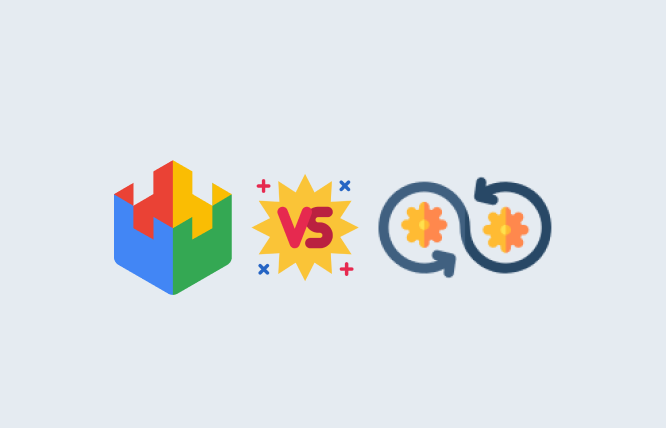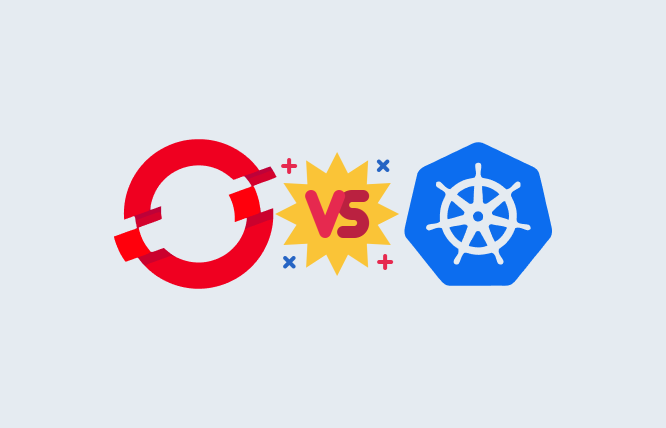Introduction
This guide will dissect the two primary strategies, horizontal scaling vs vertical scaling, enabling you to select the optimal choice to propel your business.
Continuous changes and technological adoption in the digital environment are essential for the growth of businesses of every size. This is when scaling becomes necessary.
Scaling means the capacity of your IT system to adjust to varying requirements. As your company expands, your traffic, data storage demands, and processing power needs will also increase. So, to tackle that load you will need scalibility and there are two ways of scaling; Horizontal scaling vs Vertical scaling in cloud computing.
However, selecting the correct method of scaling in cloud computing can determine whether growth is seamless and successful or hindered by bottlenecks.
Picture this: You’re managing a successful eCommerce website. Sales are skyrocketing, and customers are swarming to your website. All of a sudden, everything comes to a stop. Your website cannot handle the overwhelming amount of traffic, resulting in disappointed customers and decreased income.
Just one second of website outages can result in significant financial losses for businesses, which can vary based on the size of the business.
Horizontal Scaling vs Vertical Scaling: Let’s Break Down with An Example
Consider your infrastructure is undergoing too much load and tasks are getting delayed. Well, there are two main ways to handle this:
Vertical Scaling (Scaling Up) –
It is like adding more lanes to the highway to manage traffic load. With the same intent, you upgrade your current server with more powerful components like CPU, memory, and storage so that it performs optimally.
Horizontal Scaling (Scaling Out) –
It is like adding more routes and connections alongside the existing ones. You add more servers to your cloud environment in order to distribute the workload across them.
Both approaches have their advantages and disadvantages; they often work in correlation, and in most cases, you might need both Horizontal and Vertical Scaling to level up your organizational operations.
| Feature | Horizontal Scaling | Vertical Scaling |
| Action | Add more nodes (servers) | Upgrade hardware resources (CPU, RAM, Storage) |
| Scalability | Theoretically unlimited | Limited by hardware capacity |
| Performance | Linear increase (with proper load balancing) | Limited by single server bottleneck |
| Complexity | More complex due to distributed systems management | Simpler, single server configuration |
| Cost | Higher initial cost due to additional hardware | Lower initial cost, but may require expensive hardware upgrades later |
| Fault Tolerance | Increased fault tolerance as workload is distributed | Single point of failure if server goes down |
| Suitable for | Stateless applications, high traffic workloads. | Stateful applications, predictable workloads. |
Horizontal Scaling Explained
Horizontal scaling, or scaling out, is the process of increasing a system’s capacity by including additional nodes or machines in the infrastructure. When a server-hosted application experiences a rise in traffic or workload requirements, horizontal scaling resolves this issue by distributing the load among numerous servers. Essentially, it entails adding more servers to handle the increased demand and maintain performance. This approach increases the overall processing power and capacity of your system.
Horizontal scaling offers several key benefits which include
- Increased capacity by adding more servers to existing infrastructure.
- Improved Fault Tolerance by distributing workload on multiple servers.
You can easily add or remove servers as needed, allowing you to scale up or down based on real-time traffic patterns. Therefore, horizontal scaling can be more cost-effective than constantly upgrading hardware.
Here’s how horizontal scaling works:
A load balancer distributes incoming traffic evenly across all the instances, ensuring optimal performance. Your application is designed to be stateless, meaning each instance can handle incoming requests independently.
For instance, cloud application development services providers like Amazon Web Services (AWS) or Google Cloud Platform (GCP) facilitate horizontal scaling by allowing users to provision (create and configure) multiple virtual servers (instances) with identical configurations. These virtual servers can be easily added or removed based on demand, providing a highly scalable infrastructure for cloud-based applications.
The approach of horizontal scaling is ideal if:
- Your traffic fluctuates significantly.
- You have scalability needs.
Examples of Horizontal Scaling in Action:
- E-commerce websites can increase the number of server instances during busy shopping periods to manage increased traffic and provide customers with a seamless purchasing experience.
- Custom mobile app development companies can leverage horizontal scaling; they can efficiently manage the load of thousands of users accessing their apps simultaneously.
- DevOps-managed service providers may scale their infrastructure to accommodate the growing needs of their clients using cloud-based resources.
Vertical Scaling Explained
Vertical scaling is known to scale up a system’s performance by increasing the resources in current components. Vertical scaling, as opposed to horizontal scaling, entails enhancing the existing machines to accommodate higher workloads, rather than adding additional servers.
For instance, when a server needs more processing power, vertical scaling includes upgrading its CPUs. Likewise, cloud horizontal vs vertical scaling could mean boosting system performance by increasing memory, storage capacity, or network speed.
Vertical scaling lets you:
- Boost Processing Power: Add a more powerful CPU to tackle complex calculations faster.
- Expand Memory Capacity: Upgrade RAM to accommodate larger datasets and improve application responsiveness.
- Increase Storage Space: Add more storage to hold growing amounts of data or media files.
While familiar, vertical scaling has limitations:
- Restricted Scalability: There’s a physical limit to how much you can upgrade a single server.
- Downtime Risk: Upgrading hardware often requires taking the server offline, potentially disrupting operations.
- Potential Cost Inefficiency: Upgrading to a high-end server might be excessive for workloads with fluctuating demands.
Benefits of Vertical Scaling
Vertical scaling isn’t obsolete. It offers advantages in specific situations:
- Simple and Familiar: It’s a straightforward approach for those comfortable with traditional server management.
- Suitable for Predictable Workloads: If your resource needs are steady and predictable, vertical scaling can efficiently meet those demands.
- Potentially Lower Upfront Cost: Upgrading a single server might be initially cheaper than setting up a horizontally scaled infrastructure.
How Vertical Scaling Works
Vertical scaling involves physically upgrading the hardware components within a server. Here’s a breakdown:
- Identify Bottlenecks: Analyze your system to pinpoint performance limitations, such as CPU overload or insufficient memory.
- Upgrade Hardware: Replace the identified components with more powerful ones. This might involve installing a faster CPU, adding more RAM, or expanding storage capacity.
- Redeploy Application: Once the upgrades are complete, you may need to redeploy your application to take advantage of the increased resources.
Examples of Vertical Scaling in Action
- Small Business Websites: A website with a consistent traffic flow might benefit from vertical scaling to handle minor traffic spikes during peak hours.
- Internal Business Applications: Mission-critical applications with predictable workloads can leverage vertical scaling to ensure stable performance.
Horizontal Vs. Vertical Scaling: Use Cases
The optimal approach depends on your business-specific needs. Here’s a quick guide:
- Choose Vertical Scaling for Predictable workloads requiring a steady increase in processing power, memory, or storage.
- Choose Horizontal Scaling for Unpredictable workloads with fluctuating traffic or data processing demands. It’s also ideal for scenarios where high availability and fault tolerance are critical.
Remember, a hybrid approach is possible. You can start with a vertically scaled server and integrate horizontal scaling as your business grows and demands become more dynamic.
Cloud horizontal vs vertical scaling:Choosing the Right Approach
With the growth of your business, your demands for traffic, data storage, and processing power will also rise. The choice between horizontal scaling and vertical scaling in cloud computing greatly impacts your ability to effectively handle these needs..
- Horizontal Scaling (Scaling Out): Imagine adding more lanes to a busy highway. This approach involves adding more servers to your cloud environment and distributing the workload across them. This offers benefits like:
- Elastic Scalability: Easily add or remove servers as needed, perfectly matching your traffic patterns.
- High Availability: If one server fails, others can pick up the slack, minimizing downtime.
- Cost-Effectiveness: Pay only for the resources you use, making it budget-friendly compared to constantly upgrading hardware.
- Vertical Scaling (Scaling Up): Think of widening a single-lane road. This approach focuses on beefing up the resources of a single server by adding a more powerful CPU, increasing RAM, or expanding storage. While familiar, it has limitations:
- Limited Scalability: There’s a physical limit to how much you can upgrade a single server.
- Downtime Risk: Upgrading hardware often requires taking the server offline, potentially disrupting operations.
- Potential Cost Inefficiency: Upgrading to a high-end server might be excessive for workloads with fluctuating demands.
Hybrid Approaches: Combining Horizontal and Vertical Scaling
A combination method can be the ideal solution for numerous businesses. You can begin by using a vertically scaled server as a solid base and gradually introduce horizontal scaling as your business expands and needs change.
This offers the best of both worlds:
- Predictable Base: A vertically scaled server efficiently handles your core workload.
- Scalability and Flexibility: Horizontal scaling allows you to seamlessly accommodate surges in traffic or data processing needs.
Conclusion
Comprehending the pros and cons of horizontal scaling versus vertical scaling enables you to make informed choices regarding your cloud infrastructure. By selecting the appropriate strategy or a strategic mix, you can establish a strong, flexible, and budget-friendly base that drives the growth of your business.
For further assistance in selecting the optimal scaling strategy, consider consulting with a cloud consultancy service like AWS professional services consultant or Google Cloud consultancy company. They can provide expert guidance tailored to your specific business needs and workload characteristics. Additionally, cloud application development services can help you design and build applications that leverage the benefits of horizontal scaling seamlessly, such as serverless web development frameworks.
Frequently Asked Questions
Horizontal scaling means adding more machines or nodes to a system to handle increased load. Vertical scaling involves increasing the resources (like CPU and RAM) of an existing machine to handle more load.
If your traffic spikes or your needs are unpredictable, horizontal scaling is ideal. It also offers better fault tolerance (if one server fails, others can handle the load).
Vertical scaling is simpler and works well for predictable workloads with steady resource needs. It might also be initially cheaper for small businesses.
Absolutely! You can start with a vertically scaled server for your base and add horizontal scaling as your business grows for better flexibility.
Have questions or feedback?
Get in touch with us and we‘l get back to you and help as soon as we can!





